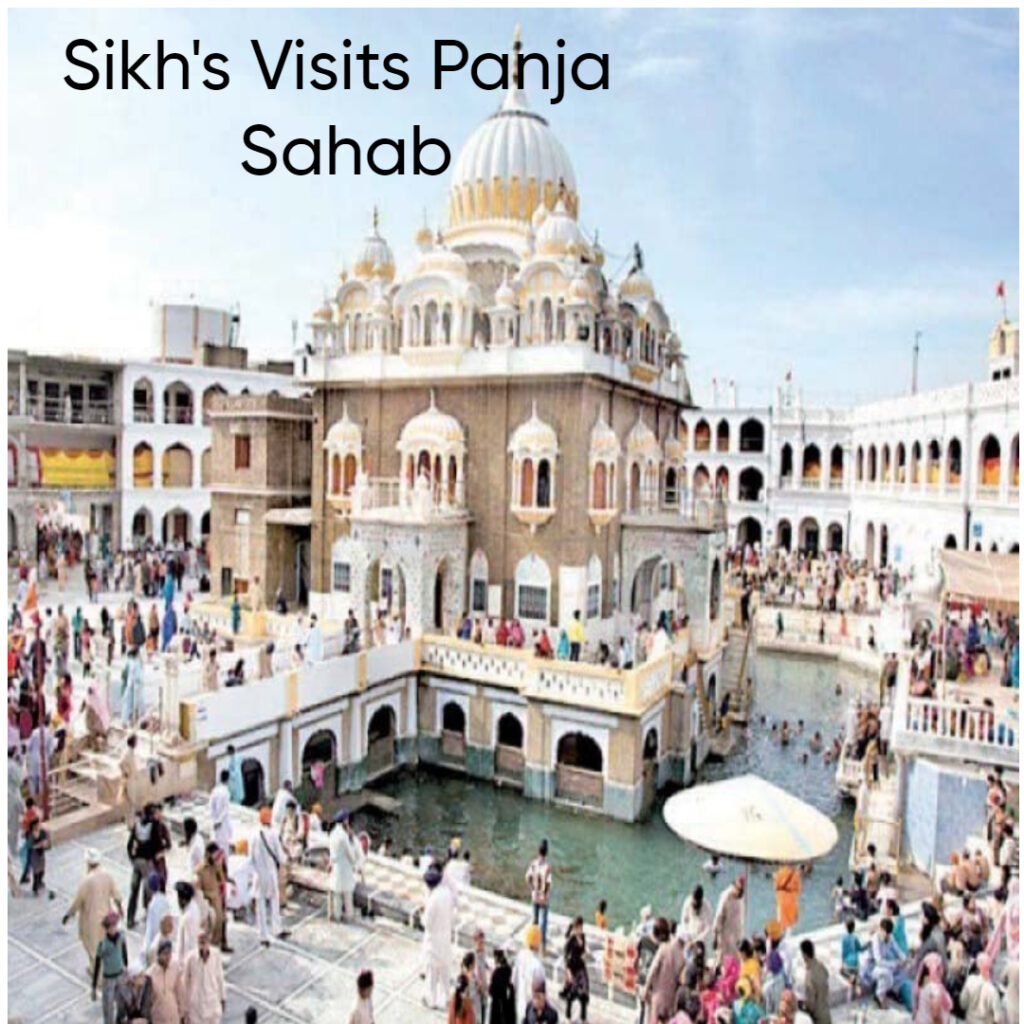The Sacred Complex of Panja Sahib: A Glimpse into Sikh Spirituality

Panja Sahib is a significant religious site for Sikhs located in Hassan Abdal, Pakistan. The history of Panja Sahib and its association with Sikhism can be traced back to the life of Guru Nanak Dev Ji, the founder of Sikhism. Panja Sahib is known for a sacred stone with the imprint of Guru Nanak’s hand, which is the focal point of reverence for Sikh pilgrims.
According to Sikh tradition, Guru Nanak Dev Ji visited Hassan Abdal during one of his Udasis (spiritual journeys). It is believed that he reached this place around the early 16th century and rested beneath a boulder that still exists at the site. This rock bears the imprint of Guru Nanak’s hand, which is revered by Sikhs as the “Panja” or the “Handprint of Guru Nanak.”
The history of Panja Sahib is also associated with a miracle attributed to Guru Nanak. It is said that the local ruler, Wali Qandhari, had a dispute with Guru Nanak regarding the spring that provided water to the town. Guru Nanak is believed to have performed a miracle by creating a freshwater spring by striking his hand on a rock, which quenched the thirst of the locals. This miracle played a significant role in establishing the sanctity of the site.
Over the centuries, the site of Panja Sahib became a place of worship and pilgrimage for Sikhs. The Gurdwara Panja Sahib, a Sikh temple, was constructed around the sacred rock, and it remains a major pilgrimage site for Sikhs worldwide. The Gurdwara also houses other relics related to Guru Nanak’s visit.
Panja Sahib holds great religious and historical significance for Sikhs. Sikhs from various parts of the world come to this place to pay their respects and seek blessings. It serves as a reminder of Guru Nanak’s teachings of unity, compassion, and the oneness of God.
Despite political tensions between India and Pakistan, Panja Sahib has been a place where people from both sides of the border, as well as from around the world, come together for religious and spiritual purposes. The site is a symbol of interfaith harmony and respect.

Experiencing Panja Sahib’s Beauty
Today, the revered hand imprint, believed to be that of Guru Nanak, is enshrined within a concrete structure as part of a building complex. Crystal-clear freshwater flows from an underground source and cascades down the rock’s surface, gently washing over the hand imprint and filling a large pool. Adjacent to the pool, on an elevated platform, stands a splendid Mughal-style gurdwara, a place of worship and reflection, originally constructed by Maharaja Ranjeet Singh (1780-1839). This gurdwara is home to the Granth Sahib, the holy scripture of Sikhism.
The surrounding courtyard features a substantial two-story hostel designed to accommodate pilgrims or “yatrees.” Throughout the complex, numerous marble plaques are embedded in the walls and floors, bearing the names of generous donors who contributed to the construction of this sacred site. Informative signs in Gurmukhi, English, and Urdu provide essential guidance and directions for visitors. From the courtyard of Panja Sahib, one can easily spot the hilltop, which is, according to the legend, the place where Baba Wali Kandahari lived and eventually passed away. This location has now become a shrine dedicated to Baba Kandhari, marked by red, black, and green flags that flutter above his grave. Interestingly, a modern communication tower has sprouted alongside the colorful flags on the hilltop.
Places to Visit in Hassan Abdal
While the Panja Sahib Gurdwara itself is the primary attraction, there are a few other places of interest and activities in and around Hassan Abdal that you might want to explore:
Gurdwara Panja Sahib: The Panja Sahib Gurdwara is the main attraction in Hassan Abdal. It’s a beautifully constructed Sikh temple that houses the sacred rock with the hand imprint of Guru Nanak. Pilgrims come here to pay their respects, make offerings, and partake in the spiritual atmosphere.
Gurdwara Punja Sahib (Sikh Museum): Besides the main gurdwara, there is a Sikh museum that offers historical insights and artifacts related to Sikhism and the history of the Panja Sahib shrine.
Baba Wali Kandhari Shrine: On top of a hill near Panja Sahib is the shrine dedicated to Baba Wali Kandhari, a Muslim saint associated with the legend of Guru Nanak. You can visit this shrine and enjoy the panoramic views of the surrounding area.
Purana Hasan Abdal: This is the old part of Hassan Abdal and is known for its historic charm and local culture. You can explore the old bazaars and architecture of the area.
Famous Food: Hassan Abdal is known for its delicious local food, particularly the “Chapal Kebabs.” Make sure to try them in local eateries.
Scenic Views: The area surrounding Hassan Abdal is quite picturesque, with hills and greenery. Consider taking a walk or a short hike to enjoy the natural beauty.
Local Markets: Explore the local markets to shop for souvenirs, traditional clothing, and handicrafts.
The history of Panja Sahib in Hassan Abdal is a testament to the enduring legacy of Guru Nanak Dev Ji and the importance of this site for Sikhs. It continues to be a place of spiritual significance and pilgrimage, fostering a sense of unity and religious tolerance among people of various faiths.




